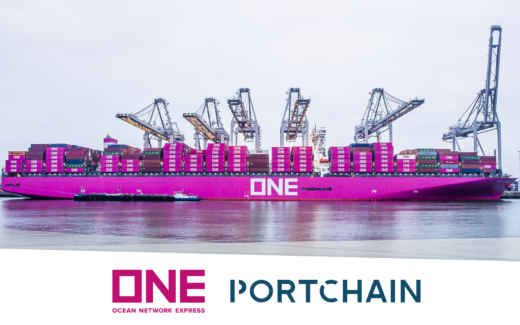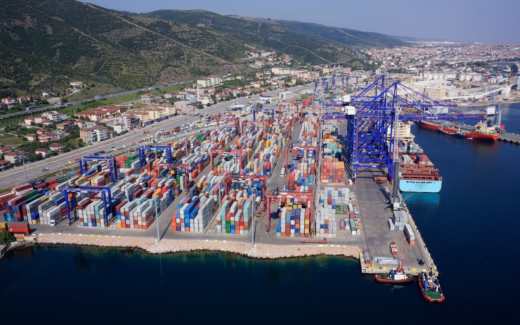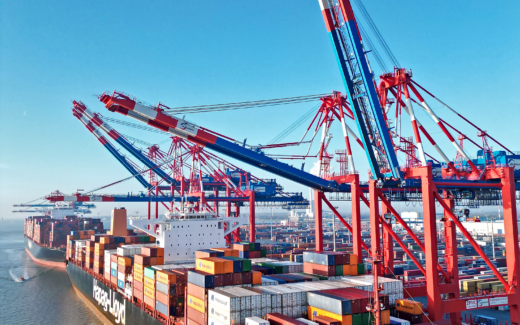
Most large organizations are not optimized to capture value from emerging technologies such as Artificial Intelligence. Most shipping companies understand that Artificial Intelligence will impact their industry, and that there is great potential in its application, as well as great risk if acting complacent.
Overcapacity, low freight rates, and high fuel prices burden the shipping industry. Many companies see digital and Artificial Intelligence as the savior. Therefore, they are increasingly directing their investments there. However, most companies are still hunting tangible results that directly affect the P&L. No company can do it alone. The most successful companies realize the need to tap into a broad ecosystem of tech companies and startups to capture value in the industry. At Portchain, we believe that small tech companies like ours can have significant impact and help large organizations capture tangible value from new advanced technologies.
Fine-tuned for business as usual
When it comes to cracking the code on how to apply Artificial Intelligence for operational impact, shipping is no different than other industries. From our combined 15 years working at McKinsey & Company prior to founding Portchain, we have worked with some the largest and most recognized transportation and logistics companies on exactly this: Applying digital, data and advanced analytics to deliver operational results at unprecedented speeds.
From our experience, large corporations are well positioned for impact given their size and reach in the market. But often not well positioned to leverage emerging technologies for impact. Large corporations are made up of complex networks of stakeholders, internal rules, and politics across an array of silos. Management and employees alike are well trained and incentivized in delivering a set of well-defined products and/or services to their customers, all within a proven business model. As long as it is business as usual, this is a machine tuned to perfection, generally delivering strong results in a predictable market environment.
Artificial Intelligence in the shipping industry
In recent years, new technology waves have swept over a number of industries with the potential to topple complacent corporations and create new market winners of the most adaptable companies. This has happened in Telecom, and is happening in Finance and Banking at the moment. Shipping, along with many other industries, is at this multi-year inflection point Many of the industry leaders have started to invest heavily in digital. Just think of CMA CGM, Maersk, and PSA. All of them count with digital incubators and corporate venture arms. This is part of their strategy to adapt and leverage these technologies for impact.
Many large companies in the shipping industry are starting to invest in the impact of Artificial Intelligence. Yet the key for success, where many companies have failed in the past, is in breaking down the big visions into specific initiatives. A good question to ask is: What will your team do on Monday as the first step towards realizing your vision?
The 5 core principles for Artificial Intelligence impact in shipping
At Portchain, we work according to five core principles that we know from experience enable a tech company like ours to have both rapid and large operational impact in shipping companies. We become a key part of their puzzle for operational value creation in Artificial Intelligence:
1. Ensure top management buy-in
If top management does not see the initiative as a priority, then the probability of failure increases significantly. Getting buy-in from top management will provide the necessary air cover to allocate, shield, and expand resources.
2. Clearly define success
Be crystal clear on what problem you are targeting, and consequently what would success be. Evolve the success criteria as the initiative hits milestone after milestone. For example, earlier “simpler” milestones combined with later and more “advanced” milestones. It can be hard to attach clear KPIs to measure impact from the start, but try to do this as early as possible.
3. Start small and prove “the fundamentals”
Jointly define the minimum viable product (MVP) that would be a significantly better solution than status quo. What are the bare minimum requirements needed to demonstrate that the fundamentals of the proposed solution work? Once you have defined the MVP, prove impact in this narrowly-scoped space quickly, with focus on your success criteria.
4. Be pragmatic
Never expect a neatly packaged 100% solution from the start when you are applying the latest technologies such as AI. Once an all-encompassing solution exists, it might already be too late. A key focus when working with startups and small tech companies is to always be pragmatic, and never lose focus of solving for operational impact – the rest is noise.
5. Scale with value
As the initiative starts to demonstrate impact, expand the solution space and stakeholder involvement accordingly. After proving the fundamentals, start expanding the impact area in the organization. For example, from one division or location to a handful, while continuously re-applying the points above.
Use Artificial Intelligence to unlock more operational value
At Portchain, we work with our clients according to this philosophy on a daily basis. We combine cutting edge mathematical optimization and machine learning with easy and intuitive cloud-solutions. Our two proprietary AI solutions for terminals and carriers unlock operational and financial value without the need to expand investments in physical infrastructure – ensuring that you always get the most out of what you already have. Visit our website to learn more.




